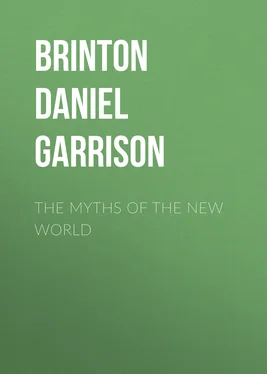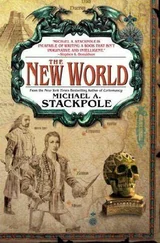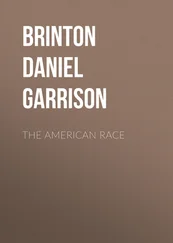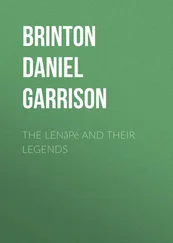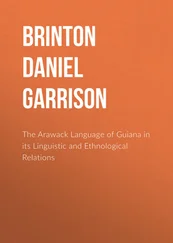Daniel Brinton - The Myths of the New World
Здесь есть возможность читать онлайн «Daniel Brinton - The Myths of the New World» — ознакомительный отрывок электронной книги совершенно бесплатно, а после прочтения отрывка купить полную версию. В некоторых случаях можно слушать аудио, скачать через торрент в формате fb2 и присутствует краткое содержание. Жанр: foreign_prose, История, Старинная литература, Мифы. Легенды. Эпос, foreign_edu, foreign_antique, на английском языке. Описание произведения, (предисловие) а так же отзывы посетителей доступны на портале библиотеки ЛибКат.
- Название:The Myths of the New World
- Автор:
- Жанр:
- Год:неизвестен
- ISBN:нет данных
- Рейтинг книги:5 / 5. Голосов: 1
-
Избранное:Добавить в избранное
- Отзывы:
-
Ваша оценка:
- 100
- 1
- 2
- 3
- 4
- 5
The Myths of the New World: краткое содержание, описание и аннотация
Предлагаем к чтению аннотацию, описание, краткое содержание или предисловие (зависит от того, что написал сам автор книги «The Myths of the New World»). Если вы не нашли необходимую информацию о книге — напишите в комментариях, мы постараемся отыскать её.
The Myths of the New World — читать онлайн ознакомительный отрывок
Ниже представлен текст книги, разбитый по страницам. Система сохранения места последней прочитанной страницы, позволяет с удобством читать онлайн бесплатно книгу «The Myths of the New World», без необходимости каждый раз заново искать на чём Вы остановились. Поставьте закладку, и сможете в любой момент перейти на страницу, на которой закончили чтение.
Интервал:
Закладка:
66
Squier, The Serpent Symbol in America .
67
Both these legends will be analyzed in a subsequent chapter, and an attempt made not only to restore them their primitive form, but to explain their meaning.
68
Compare the translation and remarks of Ximenes, Or. de los Indios de Guat. , p. 76, with those of Brasseur, Le Livre Sacré des Quichés , p. 189.
69
Buckingham Smith, Gram. Notices of the Heve Language , p. 26 (Shea’s Lib. Am. Linguistics).
70
I refer to the four “ultimate elementary particles” of Empedocles. The number was sacred to Hermes, and lay at the root of the physical philosophy of Pythagoras. The quotation in the text is from the “Golden Verses,” given in Passow’s lexicon under the word τετρακτὺς: ναι μα τον ἁμετερᾳ ψυχᾳ παραδοντα τετρακτυν, παγαν αεναου φυσεως “The most sacred of all things,” said this famous teacher, “is Number; and next to it, that which gives Names;” a truth that the lapse of three thousand years is just enabling us to appreciate.
71
Ximenes, Or. de los Indios , etc., p. 5.
72
See Sepp, Heidenthum und dessen Bedeutung für das Christenthum , i. p. 464 sqq., a work full of learning, but written in the wildest vein of Joseph de Maistre’s school of Romanizing mythology.
73
Brasseur, Hist. du Mexique , ii. p. 227, Le Livre Sacré des Quichés , introd. p. ccxlii. The four provinces of Peru were Anti, Cunti, Chincha, and Colla. The meaning of these names has been lost, but to repeat them, says La Vega, was the same as to use our words, east, west, north, and south ( Hist. des Incas , lib. ii. cap. 11).
74
Humboldt, Polit. Essay on New Spain , ii. p. 44.
75
This custom has been often mentioned among the Iroquois. Algonkins, Dakotas, Creeks, Natchez, Araucanians, and other tribes. Nuttall points out its recurrence among the Tartars of Siberia also. ( Travels , p. 175.)
76
Schoolcraft, Indian Tribes , v. pp. 424 et seq.
77
Letters on the North American Indians , vol. i., Letter 22.
78
Schoolcraft, Indian Tribes , iv. p. 643 sq. “Four is their sacred number,” says Mr. Pond (p. 646). Their neighbors, the Pawnees, though not the most remote affinity can be detected between their languages, coincide with them in this sacred number, and distinctly identified it with the cardinal points. See De Smet, Oregon Missions , pp. 360, 361.
79
Benj. Hawkins, Sketch of the Creek Country , pp. 75, 78: Savannah, 1848. The description he gives of the ceremonies of the Creeks was transcribed word for word and published in the first volume of the American Antiquarian Society’s Transactions as of the Shawnees of Ohio. This literary theft has not before been noticed.
80
Palacios, Des. de la Prov. de Guatemala , pp. 31, 32, ed. Ternaux-Compans.
81
All familiar with Mexican antiquity will recall many such examples. I may particularly refer to Kingsborough, Antiqs. of Mexico , v. p. 480, Ternaux-Compans’ Recueil de pièces rel. à la Conq. du Mexique , pp. 307, 310, and Gama, Des. de las dos Piedras que se hallaron en la plaza principal de Mexico , ii. sec. 126 (Mexico, 1832), who gives numerous instances beyond those I have cited, and directs with emphasis the attention of the reader to this constant repetition.
82
Albert Gallatin, Trans. Am. Ethnol. Soc. , ii. p. 316, from the Codex Vaticanus, No. 3738.
83
Riggs, Gram. and Dict. of the Dakota Lang. , s. v.
84
Sahagun, Hist. de la Nueva España , in Kingsborough, v. p. 375.
85
Egede, Nachrichten von Grönland , pp. 137, 173, 285. (Kopenhagen, 1790.)
86
Schoolcraft, Algic Researches , i. p. 139, and Indian Tribes , iv. p. 229.
87
Hawkins, Sketch of the Creek Country , pp. 81, 82, and Blomes, Acc. of his Majesty’s Colonies , p. 156, London, 1687, in Castiglioni, Viaggi nelle Stati Uniti , i. p. 294.
88
Peter Martyr, De Reb. Ocean. , Dec. i. lib. ix. The story is also told more at length by the Brother Romain Pane, in the essay on the ancient histories of the natives he drew up by the order of Columbus. It has been reprinted with notes by the Abbé Brasseur, Paris, 1864, p. 438 sqq.
89
Schoolcraft, Ind. Tribes , iv. p. 89.
90
Brasseur, Le Liv. Sac. , Introd., p. cxvii.
91
Diego de Landa, Rel. de las Cosas de Yucatan , pp. 160, 206, 208, ed. Brasseur. The learned editor, in a note to p. 208, states erroneously the disposition of the colors, as may be seen by comparing the document on p. 395. This dedication of colors to the cardinal points is universal in Central Asia. The geographical names of the Red Sea, the Black Sea, the Yellow Sea or Persian Gulf, and the White Sea or the Mediterranean, are derived from this association. The cities of China, many of them at least, have their gates which open toward the cardinal points painted of certain colors, and precisely these four, the white, the black, the red, and the yellow, are those which in Oriental myth the mountain in the centre of Paradise shows to the different cardinal points. (Sepp, Heidenthum und Christenthum , i. p. 177.) The coincidence furnishes food for reflection.
92
Le Livre Sacré des Quichés , pp. 203-5, note.
93
The analogy is remarkable between these and the “quatre actes de la puissance generatrice jusqu’à l’entier developpément des corps organisés,” portrayed by four globes in the Mycenean bas-reliefs. See Guigniaut, Religions de l’Antiquité , i. p. 374. It were easy to multiply the instances of such parallelism in the growth of religious thought in the Old and New World, but I designedly refrain from doing so. They have already given rise to false theories enough, and moreover my purpose in this work is not “comparative mythology.”
94
Müller, Amer. Urreligionen , p. 105, after Strahlheim, who is, however, no authority.
95
Müller, ubi supra , pp. 308 sqq., gives a good résumé of the different versions of the myth of the four brothers in Peru.
96
The Tupis of Brazil claim a descent from four brothers, three of whose names are given by Hans Staden, a prisoner among them about 1550, as Krimen, Hermittan, and Coem; the latter he explains to mean the morning, the east ( le matin , printed by mistake le mutin , Relation de Hans Staden de Homberg , p. 274, ed. Ternaux-Compans, compare Dias, Dicc. da Lingua Tupy , p. 47). Their southern relatives, the Guaranis of Paraguay, also spoke of the four brothers and gave two of their names as Tupi and Guarani, respectively parents of the tribes called after them (Guevara, Hist. del Paraguay , lib. i. cap. ii., in Waitz). The fourfold division of the Muyscas of Bogota was traced back to four chieftains created by their hero god Nemqueteba (A. von Humboldt, Vues des Cordillères , p. 246). The Nahuas of Mexico much more frequently spoke of themselves as descendants of four or eight original families than of seven (Humboldt, ibid. , p. 317, and others in Waitz, Anthropologie , iv. pp. 36, 37). The Sacs or Sauks of the Upper Mississippi supposed that two men and two women were first created, and from these four sprang all men (Morse, Rep. on Ind. Affairs , App. p. 138). The Ottoes, Pawnees, “and other Indians,” had a tradition that from eight ancestors all nations and races were descended (Id., p. 249). This duplication of the number probably arose from assigning the first four men four women as wives. The division into clans or totems which prevails in most northern tribes rests theoretically on descent from different ancestors. The Shawnees and Natchez were divided into four such clans, the Choctaws, Navajos, and Iroquois into eight, thus proving that in those tribes also the myth I have been discussing was recognized.
Читать дальшеИнтервал:
Закладка:
Похожие книги на «The Myths of the New World»
Представляем Вашему вниманию похожие книги на «The Myths of the New World» списком для выбора. Мы отобрали схожую по названию и смыслу литературу в надежде предоставить читателям больше вариантов отыскать новые, интересные, ещё непрочитанные произведения.
Обсуждение, отзывы о книге «The Myths of the New World» и просто собственные мнения читателей. Оставьте ваши комментарии, напишите, что Вы думаете о произведении, его смысле или главных героях. Укажите что конкретно понравилось, а что нет, и почему Вы так считаете.
